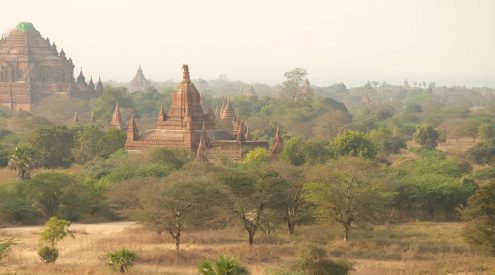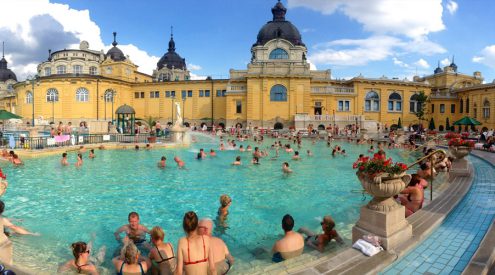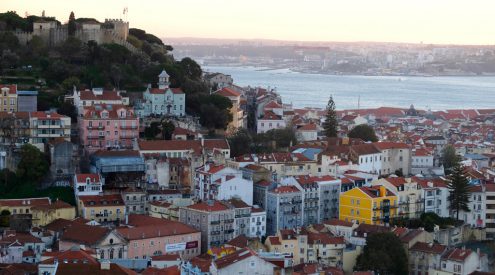In Italy they say, all roads lead to Rome and privately all non-roman Italians say all Romans are mad, there seems to be truth in this. The Romans pride themselves on their expert driving abilities but whether simply doing as you please and hoping that nobody else minds, is good driving, I am not about to judge. As I enter the city, all street markings are abandoned and it is only the signage on a variety of poles that tries desperately to control the traffic flow. But as the signs are highly prized by graffiti artists and often vandalized they can be mainly ignored for their original purpose. Traffic lights, when they are to be found, are merely suggestions not to be taken seriously. If you are in a side street and want to get into the main traffic flow, slowly, slowly edge forward until it is no longer possible for the oncoming traffic to go around you. This is the moment for decisive action, now is the time for speed, nothing to it. If however, you expect somebody to actually, willing, give way for you or expect a break in the traffic flow, you are going nowhere.
The same goes for the pedestrian traffic. You have the right of way at a pedestrian crossing but nobody is going to give it to you, you have to take it. However, you cannot grab that right, you will die. It is once again a matter of gently, gently stepping into the traffic flow, with your eyes firmly and sternly fixed on the oncoming vehicles, paying extra attention to the mopeds, they really don’t like slowing down, let alone stopping for pedestrians. Now that you have started moving do not hesitate, slowly and with determination move forward and like Moses parting the sea, you will get across unscathed and you will be leading a whole slew of pedestrians used to more disciplined driving conditions through the tempest for which they will be grateful. How a Swiss tourist ever comes out of Rome alive is a mystery. In Switzerland, the pedestrians abuse the right of way with aggressive arrogance. So that huge traffic jams build up because the pedestrians simply walk into the road, without so much as a glance at the oncoming traffic, completely confident that the cars will stop. Not just slow down, but come to a complete and absolute halt as the pedestrians dribble across the road; Swiss pedestrians and Roman drivers, now that must be an interesting mix.
An early morning bus ride deposits me in the centre of Rome. It is a place of giants wrestling with serpents that writhe between their legs, naked goddesses leap out of fountains on the bare backs of wild white horses. Priests in black tunics stare in befuddled confusion at ticket vending machines that vend no tickets. Nuns drink pure water from dirty fountains while plain- clothes policemen play cat and mouse with illegal vendors. Rome is a place where gentle aging has become just plain filthy and the sewers heave and burp under the flood of humanity. Mom and pop tourist who have been saving for years to live out the Italian dream, now stand for hours in the sweltering heat, without bench or shade or indication of the length of queue they are in, to see fleeting glimpses of long imagined sights. They buy massively overpriced lunches from the street vendors, which they eat like beggars, sitting on filthy sidewalks where they share the crumbs of their takeout lunch with the fat grey pigeons that waddle from group to group like officious ticket collectors. The wail of ambulances is constantly in the background as another grey-haired tourist succumbs to dehydration or heatstroke. Exhausted tourists and don’t care Romans face-off over extravagant entry fees. The Romance of Italy is not to be found on a package tour bus.
Watching the hundreds of tourist groups, bound in brief brotherhood by a particular color of hat or scarf, standing in a queue that snakes the perimeter of St Peters Square. I realize that today to be alone in the Sistine Chapel or St Peters would be to be the pope. I decide to keep my old memories; of being able to walk about the Sistine chapel at will, even climbing the hundreds of stairs to the levels just under the famous ceiling. Memories of walking quite alone between the giant pillars of St Peters, and the cool silence of the basilica that, when disturbed by a whispered prayer, reverberated slightly like the shimmering reflection of a pond stroked by a breeze. In my memory the Pieta is unprotected and lit only by a high window. I remember gazing in confusion at the sculpture; it seemed to me impossible that it was knocked out of stone with a hammer and a chisel. I reached out to gently touch the hem of her skirt, fully convinced it might be soft. The realization that a human created this filled me with awe and confirmed to me what art is and why we need it. It is to know you belong to a species that can create such superlative beauty, which inspires us all to do better. But the Pieta was created in a time when artists could say with confidence;
‘It matters not how long it takes, but that it is beautiful’
Today whether it is beautiful is a question too quaint to contemplate. Time is the thing. And time is money, so the crowds shuffle slowly in and out of these famous places, never once allowed the sheer luxury of silent solitary contemplation of the beauty surrounding them.
Leaving the tour groups to their misery I duck into a back street and come across a church wholesaler where I discover that it costs a lot to furnish a Catholic church. The chalice, cheapest one I saw, 550€ a Jesus figure on a cross anything up to 2500€, depending on size, Madonna figure, around 700€, candles 6€ per kilo. No wonder churches have changed to electric candles. In tiny streets local craftsmen labor to sew the perfect shirt or re-gild yet other 400-year-old putti. A carpenter puts the final polish on gleaming dark wood chairs and balancing high on a scaffold a lone artisan repairs ancient stucco leaves that have fallen from the high church towers. The Pantheon requests silence in every language but the masses babble and the children scream. Leaving the noise I find an empty cathedral with unadvertised works of the Renaissance masters here I stare as long as I please at beautiful ceilings and get nose to toe with a lesser known Michelangelo sculpture; tree climbing toes those.
At lunch I stop in a restaurant and pay an extravagant price in exchange for a limp salad, a glass of water and a place to sit out of the sun and, most importantly, for the use of a toilet. The life of a tourist is, never knowing when you will find the next toilet. Replenished and relieved I wander to the Trevi Fountain where I think I finally grasp the meaning behind mass tourism. It is the pursuit of photographic trophies of ones-self in front of famous and preferably far off sights that you can show the less fortunate back home. But at the Trevi Fountain the tourist crush in the small piazza is such that people must climb lampposts and the steps of the buildings opposite just to get a glimpse of the famous horses. To actually be close enough to throw a coin into the fountain is like getting front row tickets to a Robbie Williams concert and to achieve a photograph of just you and the fountain would be the equivalent of a back stage pass.
By late afternoon I arrive at the Colosseum where my imagination fills the crumbling seats with 50 000 toggaed Romans. In my mind’s eye, the wooden boards that cover the gladiator’s cells and animal cages below slowly turn red as wild animals and gladiators fight desperately to a bloody savage death. The air is filled with the smell of perfumed oils, sweat and blood, reverberates as thousands roar and howl their approval. I yank my mind back into the present and wonder if we have changed much since then. Death and carnage still fascinates, only today we get our violence fix properly sanitized and plastic wrapped in cinemas and on television.
Extract from, ‘My Year of Beds, book one – Germany to China’

















